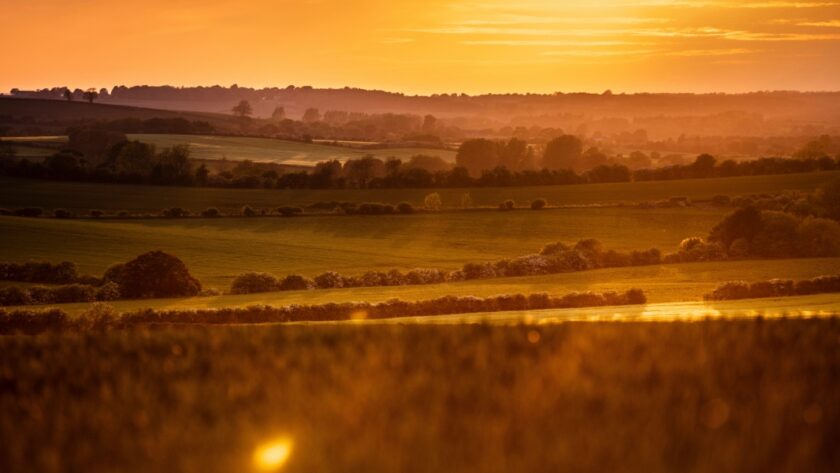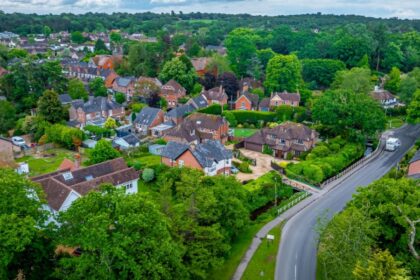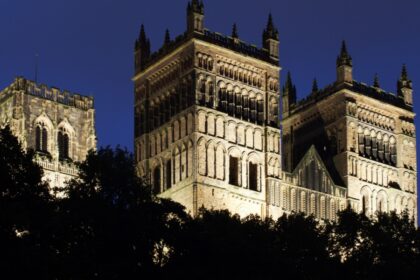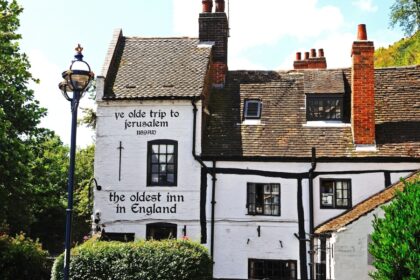If you head out into the east of England and keep going, eventually the hills run out, the roads get long and straight, and you find yourself in Lincolnshire. It is one of those quietly enormous counties that many people drive through without quite realising how much is tucked away here. Flat fields stretch to the horizon, spires rise out of distant towns, and the skies seem much larger than strictly necessary.
Lincolnshire is not a county in a hurry. It is a place of market towns, windmills, gentle hills, wide estuaries and the sort of countryside that feels faintly timeless.
Cathedrals, castles and the art of building high
The city of Lincoln, perched rather grandly on its hill, has been keeping watch over the surrounding countryside since Roman times. Its cathedral, once the tallest building in the world, still dominates the skyline with the sort of confident verticality medieval builders particularly enjoyed. The climb up Steep Hill to reach it remains exactly as steep as advertised.
Next door sits Lincoln Castle, complete with preserved walls you can walk and one of only a few surviving copies of the Magna Carta. The city’s old streets are filled with independent shops, tea rooms and occasional reminders that Vikings once passed this way too.
Big skies, open fields and the odd hill
Most of Lincolnshire is reassuringly flat, which makes the appearance of the Lincolnshire Wolds something of a surprise. These low rolling hills offer pleasant walking, pretty villages and excellent picnic spots, all under skies that seem determined to occupy most of the horizon.
Elsewhere, the county’s flatness has proved ideal for farming. Vast fields of wheat, sugar beet and potatoes stretch for miles, occasionally interrupted by an unexpectedly grand country house or an extremely determined church spire.
Seaside resorts, sand and donkeys
Lincolnshire’s coastline offers a classic slice of British seaside. Skegness remains cheerfully traditional, with its promenade, amusement arcades, candyfloss stands and donkeys offering rides along the beach. Further up the coast, Mablethorpe and Cleethorpes provide similarly nostalgic experiences, complete with fish and chips, slot machines and occasional stiff breezes.
For something quieter, the saltmarshes and bird reserves along The Wash offer excellent opportunities to spot wildlife and avoid arcades entirely.
Pilgrims, poets and aircraft
Lincolnshire also played its part in shaping history. Many of the early Pilgrim Fathers set sail for the New World from these shores. In later centuries, the flat landscapes made ideal airfields, earning the county its nickname as ‘Bomber County’ during the Second World War. Memorials and museums like the International Bomber Command Centre tell the stories of those who flew from here.
The poet Alfred, Lord Tennyson, was born in Somersby in the Lincolnshire Wolds, and you can still visit his childhood home and walk the same countryside that inspired his early work.
Windmills, waterways and gentle wandering
Lincolnshire’s waterways are another of its quiet charms. The rivers, canals and drains that criss-cross the county offer scenic boat trips and peaceful walks, while the remaining windmills, many still in working order, add a pleasingly Dutch touch to the landscape.
Villages like Stamford, often described as one of England’s finest stone towns, offer handsome Georgian streets and the sort of antique shops that encourage slow browsing and mild haggling.
Where the landscape opens up and lets you breathe
Lincolnshire does not demand attention. It offers space, light, history and a sense of quiet confidence. The views go on forever, the churches stand tall, and life moves at a pace that allows time for a second cup of tea. After a while, you stop expecting drama and start noticing how very pleasant that can be.





